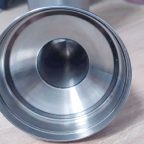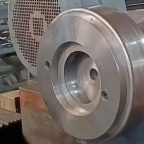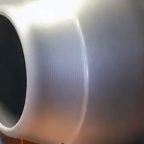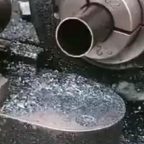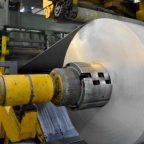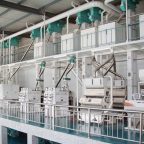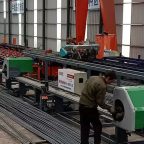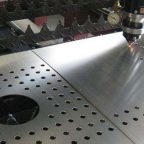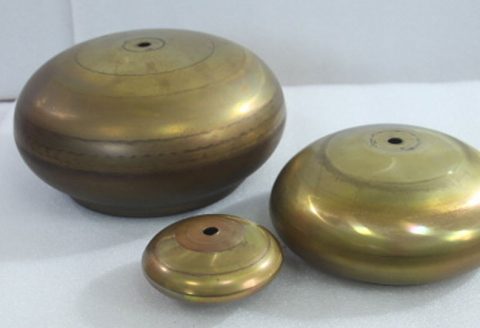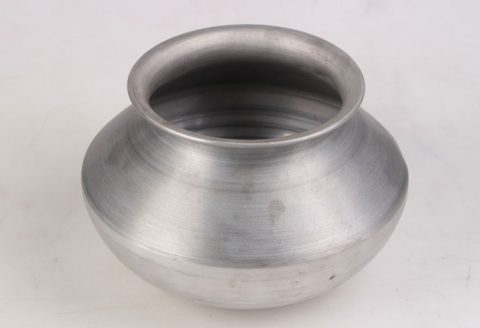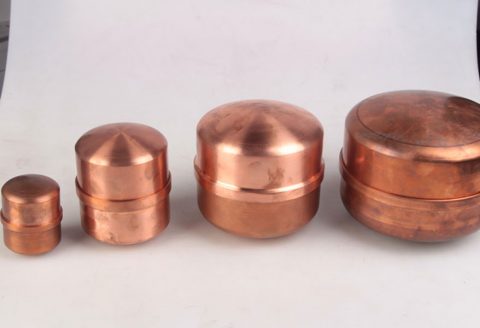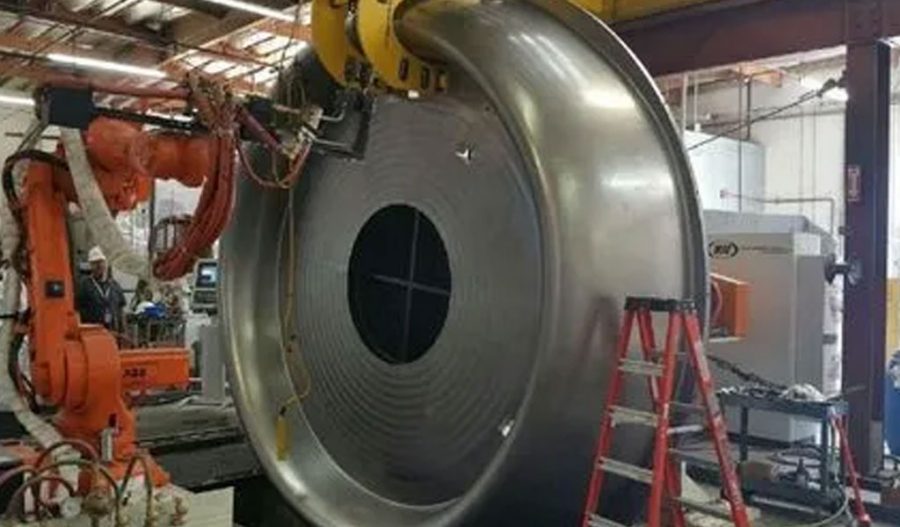
Metal spinning, also known as spin forming or spinning, is a metalworking process that utilizes a lathe to form a flat metal disc or tube into a cylindrical, conical, or other axially symmetric shapes. This process has been extensively employed in various industries, including aerospace, due to its precision, cost-effectiveness, and ability to produce complex geometries. The application of metal spinning in the aerospace industry is particularly significant due to the stringent requirements for high-strength, lightweight, and reliable components.
History of Aerospace Spinning
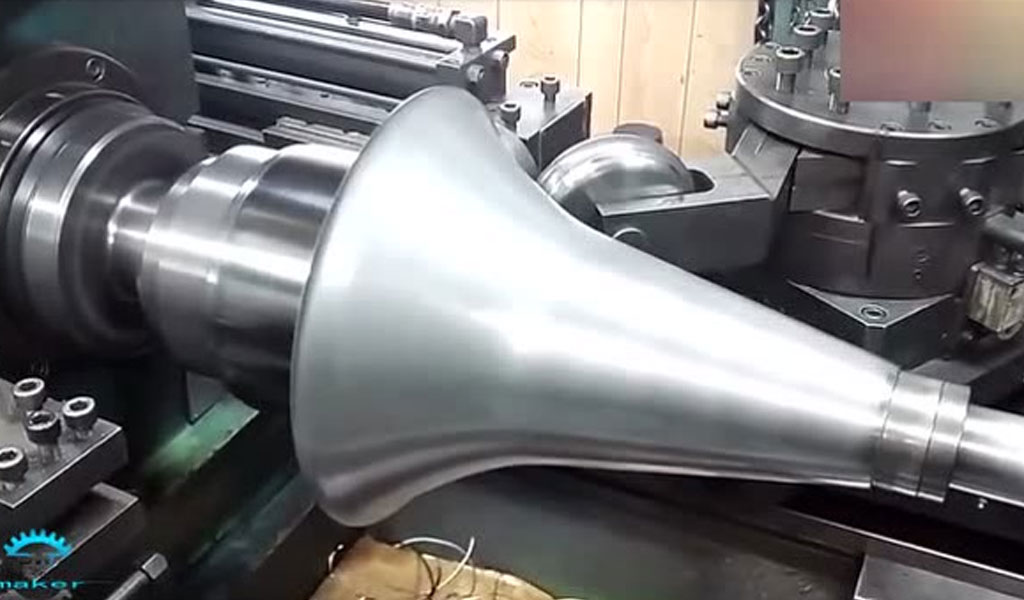
Metal spinning has ancient origins, dating back to the time of the ancient Egyptians and Chinese. Initially, the process was performed manually using hand tools. Over time, the technique evolved with the advent of more sophisticated machinery and tools, leading to the development of the modern metal spinning processes used today. The introduction of powered lathes and computer numerical control (CNC) technology has significantly enhanced the precision, efficiency, and capabilities of metal spinning.
How To Aerospcae Spinning Work?
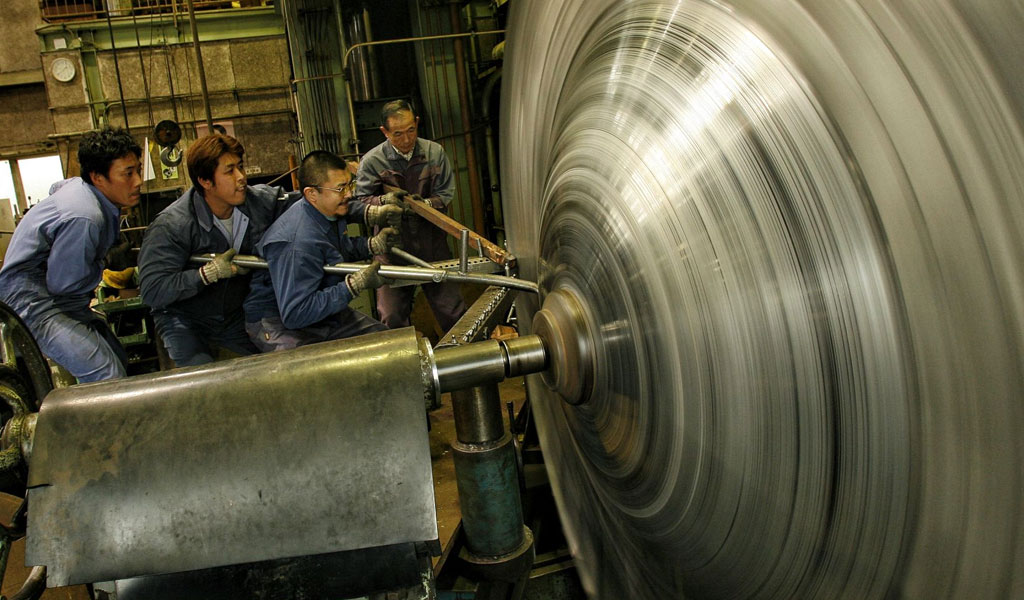
The metal spinning process involves mounting a metal blank onto a spinning lathe. As the lathe rotates, a roller or other forming tool applies localized pressure to the blank, gradually shaping it into the desired form. The process can be performed hot or cold, depending on the material and specific requirements. The key steps in metal spinning include:
- Blank Preparation: The metal blank is cut to the required size and shape.
- Mounting: The blank is mounted onto the spinning lathe.
- Forming: The spinning lathe rotates the blank while the forming tool applies pressure, shaping the metal into the desired form.
- Finishing: The formed part is removed from the lathe and may undergo additional finishing processes such as trimming, heat treatment, or surface coating.
Materials Used in Metal Spinning
A wide range of materials can be used in metal spinning, including aluminum, titanium, stainless steel, and various alloys. The choice of material depends on the specific requirements of the aerospace component, such as strength, weight, thermal resistance, and corrosion resistance.
Aluminum
Aluminum is one of the most commonly used materials in the aerospace industry due to its high strength-to-weight ratio, excellent corrosion resistance, and good machinability. Aluminum alloys, such as 2024, 6061, and 7075, are frequently used in metal spinning for aerospace applications.
Titanium
Titanium is valued for its high strength, low density, and excellent corrosion resistance. It is often used in aerospace components that require superior performance in extreme environments. Titanium alloys, such as Ti-6Al-4V, are commonly used in metal spinning for critical aerospace parts.
Stainless Steel
Stainless steel offers excellent strength, durability, and resistance to corrosion and heat. It is used in aerospace applications where these properties are critical. Common stainless steel grades used in metal spinning include 304, 316, and 410.
Advantages of Metal Spinning for Aerospace Applications
Metal spinning offers several advantages that make it particularly suitable for aerospace applications:
Precision and Accuracy
Metal spinning allows for the production of components with tight tolerances and high precision. This is crucial in the aerospace industry, where even minor deviations can significantly impact performance and safety.
Material Efficiency
The process of metal spinning minimizes material waste, as the metal is deformed rather than cut away. This efficiency is particularly beneficial when working with expensive materials such as titanium and high-performance alloys.
Cost-Effectiveness
Compared to other metal forming techniques, metal spinning is relatively cost-effective, especially for low to medium production volumes. The process requires minimal tooling and setup costs, making it an economical choice for producing prototypes and small batches.
Versatility
Metal spinning can produce a wide range of shapes and sizes, from small intricate components to large, complex parts. This versatility is essential in the aerospace industry, where components often need to be customized for specific applications.
Structural Integrity
The metal spinning process enhances the mechanical properties of the formed parts by work hardening the material. This results in components with improved strength and durability, which are critical for aerospace applications.
Applications in the Aerospace Industry
Metal spinning plays a vital role in the aerospace industry by enabling the production of various components that require high precision, strength, and durability. The versatility and efficiency of the metal spinning process make it suitable for manufacturing a wide range of aerospace parts, including those used in rockets, missiles, jet engines, satellites, spacecraft, and aircraft. Below are some of the key applications of metal spinning in the aerospace industry:
Rocket and Missile Components
Rocket and missile components often require seamless, high-strength, and lightweight structures to ensure optimal performance and reliability. Metal spinning is ideal for producing these components due to its ability to form complex shapes with high precision and structural integrity. Some of the key rocket and missile components manufactured using metal spinning include:
- Nose Cones: Metal spinning is used to produce nose cones for rockets and missiles. These components must withstand high aerodynamic pressures and temperatures, making the strength and precision of metal spinning essential.
- Rocket Motor Casings: The outer casings of rocket motors are typically manufactured using metal spinning. The seamless and uniform nature of spun components ensures that the casings can withstand the extreme pressures and temperatures generated during rocket propulsion.
- Fuel Tanks: Fuel tanks for rockets and missiles are often produced using metal spinning due to the need for lightweight and high-strength structures. The process allows for the creation of complex shapes that maximize fuel capacity while minimizing weight.
Jet Engine Parts
Jet engines are subjected to extreme temperatures, pressures, and mechanical stresses, necessitating the use of high-performance materials and precise manufacturing techniques. Metal spinning is employed to produce various critical jet engine components, including:
- Combustion Chamber Liners: Metal spinning is used to manufacture liners for combustion chambers, which must endure high temperatures and thermal cycling. The process ensures that the liners have uniform wall thickness and excellent structural integrity.
- Afterburner Components: Afterburners, used in military jet engines to increase thrust, require components that can withstand high temperatures and rapid thermal cycling. Metal spinning provides the necessary precision and material properties for these components.
- Exhaust Nozzles: The exhaust nozzles of jet engines, which direct the flow of exhaust gases, are often produced using metal spinning. The process allows for the creation of complex shapes with smooth surfaces, optimizing aerodynamic performance.
Satellite and Spacecraft Components
The aerospace industry relies on metal spinning to produce lightweight and high-strength components for satellites and spacecraft. These parts must meet stringent performance requirements, including resistance to extreme temperatures, radiation, and mechanical stresses. Key satellite and spacecraft components manufactured using metal spinning include:
- Antenna Reflectors: Metal spinning is used to produce large, precise antenna reflectors for satellites. These components require smooth surfaces and accurate geometries to ensure optimal signal reception and transmission.
- Fuel Tanks: Similar to rocket fuel tanks, spacecraft fuel tanks are often manufactured using metal spinning to achieve lightweight and high-strength structures. The process allows for the creation of complex shapes that optimize fuel storage and minimize weight.
- Structural Components: Various structural components of satellites and spacecraft, such as support struts, housings, and frames, are produced using metal spinning. The process provides the necessary precision and material properties to ensure the reliability and longevity of these components.
Aircraft Components
Aircraft components require high precision, strength, and reliability to ensure safe and efficient operation. Metal spinning is used in the production of various aircraft parts, including:
- Landing Gear Struts: Metal spinning is employed to manufacture landing gear struts, which must withstand significant mechanical stresses during takeoff, landing, and ground operations. The process ensures that the struts have uniform strength and durability.
- Hydraulic Cylinders: Hydraulic cylinders used in aircraft control systems and landing gear mechanisms are often produced using metal spinning. The process provides the necessary precision and structural integrity for these critical components.
- Ducting: Metal spinning is used to produce complex ducting systems for aircraft, which direct airflow for cooling, ventilation, and other purposes. The process allows for the creation of intricate shapes with smooth surfaces, optimizing airflow and reducing drag.
- Engine Components: Various engine components, such as turbine blades, compressor disks, and casings, are manufactured using metal spinning. The process ensures that these components have the necessary strength, precision, and resistance to high temperatures and pressures.
Propellant Tanks
Propellant tanks for rockets, missiles, and spacecraft require lightweight and high-strength structures to store fuel and oxidizers. Metal spinning is often used to manufacture these tanks due to its ability to produce seamless, uniform, and structurally sound components. The process ensures that the tanks can withstand the pressures and thermal stresses encountered during propulsion.
Pressure Vessels
Pressure vessels used in aerospace applications, such as gas storage tanks and hydraulic accumulators, are often produced using metal spinning. The process provides the necessary strength and integrity to ensure that the vessels can safely contain high-pressure fluids and gases.
Heat Shields
Heat shields used in spacecraft and re-entry vehicles must withstand extreme temperatures and thermal gradients. Metal spinning is employed to produce these components, providing the necessary precision and material properties to ensure effective thermal protection.
Reflectors and Radomes
Reflectors and radomes used in aerospace communication and radar systems require precise geometries and smooth surfaces to ensure optimal performance. Metal spinning is used to manufacture these components, providing the necessary accuracy and surface finish.
The application of metal spinning in the aerospace industry is extensive and diverse, encompassing a wide range of components that require high precision, strength, and reliability. The process offers numerous advantages, including material efficiency, cost-effectiveness, versatility, and structural integrity. As the aerospace industry continues to evolve, metal spinning will remain a crucial manufacturing process for producing the next generation of aerospace components. Ongoing advancements in materials, technology, and process control will further enhance the capabilities and applications of metal spinning, ensuring its continued relevance and importance in the aerospace sector.
Challenges and Considerations
While metal spinning offers numerous advantages, there are also several challenges and considerations to address when applying the process in the aerospace industry:
Material Limitations
Not all materials are suitable for metal spinning. Some materials may be too brittle or have poor formability, making them difficult to spin. Material selection is critical to ensure the success of the process.
Tooling and Equipment
The quality and precision of the tooling and equipment used in metal spinning directly impact the quality of the final product. Aerospace applications often require specialized tooling and advanced CNC lathes to achieve the desired results.
Process Control
Maintaining consistent quality and precision throughout the metal spinning process requires careful control and monitoring. Variations in material properties, tool wear, and process parameters can affect the final product.
Skill and Expertise
Metal spinning is a skilled trade that requires experienced operators and engineers. The complexity and precision required in aerospace applications demand a high level of expertise.
Future Trends and Developments
The field of metal spinning is continuously evolving, with ongoing research and development aimed at improving the process and expanding its applications in the aerospace industry. Some future trends and developments include:
Advanced Materials
Research is being conducted to develop new materials with enhanced properties for metal spinning. These materials aim to provide better performance, reduced weight, and improved formability for aerospace components.
Automation and Robotics
The integration of automation and robotics in metal spinning processes is expected to increase efficiency, precision, and consistency. Automated systems can handle complex geometries and reduce the reliance on manual labor.
Simulation and Modeling
Advancements in simulation and modeling technologies allow for better prediction and optimization of the metal spinning process. These tools help engineers design and refine components with greater accuracy and efficiency.
Hybrid Manufacturing
The combination of metal spinning with other manufacturing techniques, such as additive manufacturing and aerospace machining, is being explored to create hybrid processes. These hybrid approaches can offer unique advantages and expand the possibilities for aerospace component production.
Conclusion
Metal spinning is a versatile and valuable manufacturing process that plays a crucial role in the aerospace industry. Its ability to produce high-precision, high-strength, and lightweight components makes it an ideal choice for a wide range of aerospace applications. Despite its challenges, ongoing advancements in materials, technology, and process control continue to enhance the capabilities and applications of metal spinning in the aerospace sector. As the aerospace industry evolves, metal spinning will remain a vital and innovative process for producing the next generation of aerospace components.
Maximize Tooling and CNC Metal Spinning Capabilities.
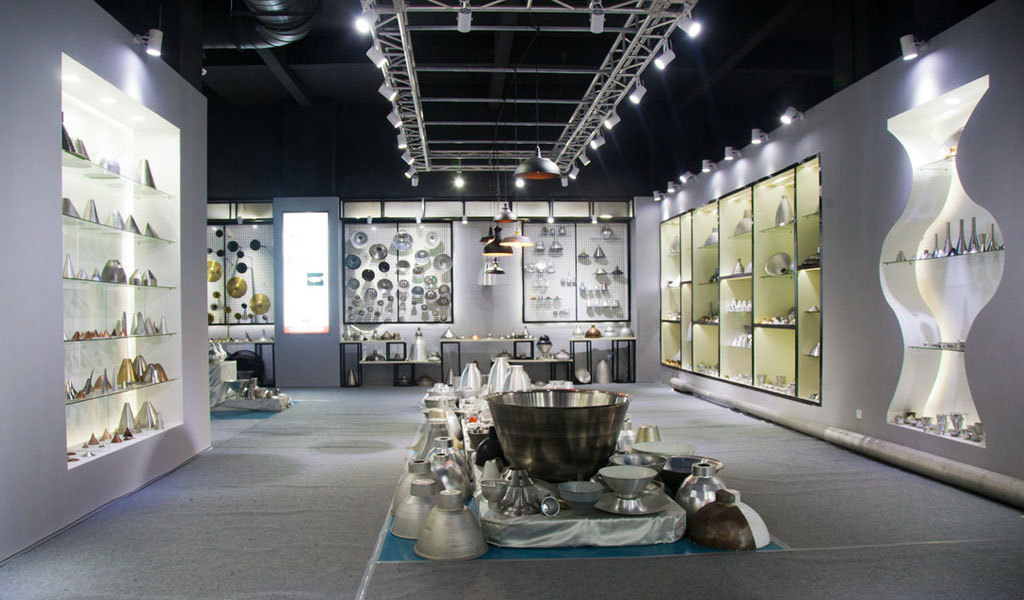
At BE-CU China Metal Spinning company, we make the most of our equipment while monitoring signs of excess wear and stress. In addition, we look into newer, modern equipment and invest in those that can support or increase our manufacturing capabilities. Our team is very mindful of our machines and tools, so we also routinely maintain them to ensure they don’t negatively impact your part’s quality and productivity.
Talk to us today about making a rapid prototype with our CNC metal spinning service. Get a direct quote by chatting with us here or request a free project review.
BE-CU China CNC Metal Spinning service include : CNC Metal Spinning,Metal Spinning Die,Laser Cutting, Tank Heads Spinning,Metal Hemispheres Spinning,Metal Cones Spinning,Metal Dish-Shaped Spinning,Metal Trumpet Spinning,Metal Venturi Spinning,Aluminum Spinning Products,Stainless Steel Spinning Products,Copper Spinning Products,Brass Spinning Products,Steel Spinning Product,Metal Spinnin LED Reflector,Metal Spinning Pressure Vessel,
